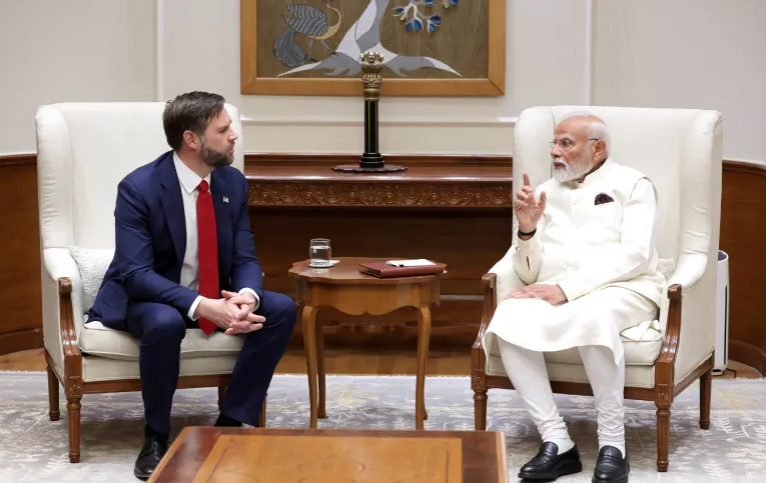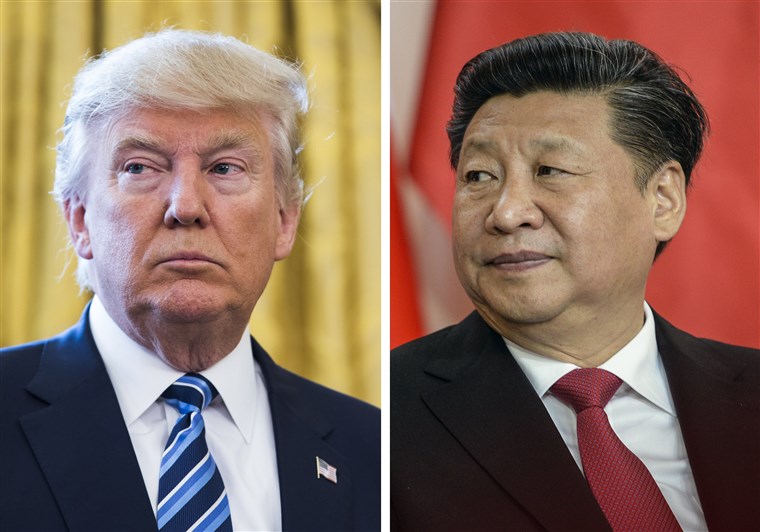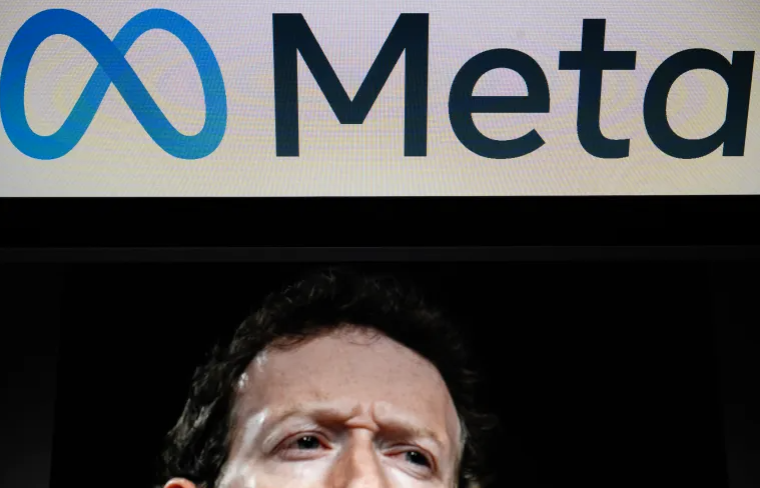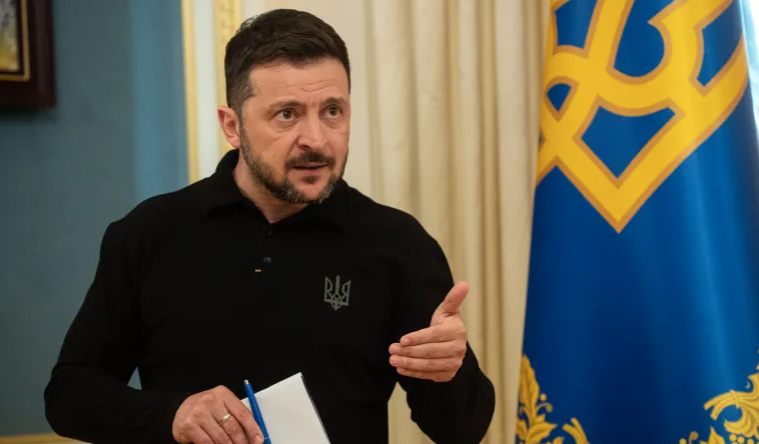WORLD NEWS

US Vice President JD Vance and his family visited Indian Prime Minister Narendra Modi on Monday evening in a diplomatic gesture underscored by a delicate backdrop of trade tensions between the two nations. While the optics were warm with Vance’s family receiving peacock feathers from Modi at his residence, the larger focus was on the escalating trade war led by US President Donald Trump and its potential economic fallout for India.
During the visit, Modi and Vance reviewed bilateral cooperation across various sectors, including energy, defense, and strategic technologies, with both sides expressing commitment to advancing their partnership. However, the shadow of Trump's threat to impose major tariffs on Indian goods looms large, as the US looks to use its economic leverage to secure concessions in ongoing trade negotiations.
US Tariff Threats and India’s Economic Concerns
India, the US’s largest trading partner, is currently navigating a precarious situation. The Trump administration has imposed reciprocal tariffs on Indian imports, which include a 26% levy on Indian goods, although this has been paused for 90 days until July 8, with the exception of China. As the tariff battle continues, India seeks a bilateral trade deal to avoid further escalation.
While Modi’s government aims to dodge the full impact of these tariffs, concerns from Indian farmers are growing. For decades, India has used tariffs to shield its agriculture sector, but now, as trade negotiations with the US gain momentum, many worry that the government could weaken these protections, which have long safeguarded farmers from international competition.
On the day of Vance’s visit, protests erupted in several villages across India, with farmers burning effigies of Vance and raising slogans like “Go back, Vance. India is not for sale!” Farmers fear that agricultural tariffs could be slashed as part of a trade deal, flooding local markets with cheaper foreign produce and jeopardizing their livelihoods.
A Delicate Balancing Act
The US is India’s largest export market, with goods like pharmaceutical products, pearls, and electrical machinery leading Indian exports. However, the US also holds a trade deficit with India, with the US importing far more from India than it exports to the country. Despite this, the US remains a crucial partner for India, especially as New Delhi faces growing tensions with China. Strategic cooperation between the two nations has grown, with both countries looking to counter China’s influence in the Asia Pacific region.
However, the US tariff threats have complicated this relationship. President Trump has repeatedly accused India of being a "tariff king", citing India’s high import duties. In recent months, India has already made some tariff cuts to appease the US, reducing duties on products like bourbon and Harley Davidson motorcycles, but agriculture tariffs remain a sticking point.
Agricultural Concerns and Farmer Protests
Farmers’ groups, particularly those associated with the All India Kisan Sabha (AIKS), have voiced strong opposition to any potential reduction of agricultural tariffs. India’s average agricultural tariff rate stands at 39%, which is considerably higher than the US’s agricultural tariff of 4%. For farmers, reduced protection from imports could mean an influx of cheaper agricultural products from the US, putting their own crops and produce at risk.
India’s farming sector is crucial to its economy, with nearly half of its population reliant on agriculture. Farmers fear that free trade agreements could lead to the entry of heavily subsidized Western agricultural products, which they cannot compete with due to differences in infrastructure and financial support.
The Modi government’s decision to engage in trade negotiations with the US has caused significant political friction. Critics argue that Modi’s efforts to maintain a cordial relationship with Trump may be sacrificing the needs of India’s farmers. In fact, farmers are particularly wary of the Modi government’s pro-market stance, given its previous decisions to roll back agricultural reforms following widespread protests in 2021.
The Path Forward: Trade Deal or Political Concessions?
While discussions around a bilateral trade agreement between the US and India continue, the political and economic stakes are high. Finance Minister Nirmala Sitharaman has suggested that a first phase of the trade deal could be ready by the end of the year, but critics worry that the 90-day tariff reprieve may not provide enough time for comprehensive discussions.
Trade economist Biswajit Dhar warned that any concessions to the US in trade negotiations, particularly regarding agriculture, could lead to serious economic and political fallout. “If India bows to Trump’s demands, it will create a host of social and political problems,” Dhar said, stressing the need for India to safeguard its citizens’ needs.
As negotiations unfold, India faces the difficult challenge of balancing trade benefits with domestic agricultural protections, all while navigating the complex political dynamics of US-India relations.




